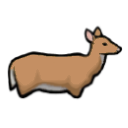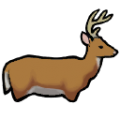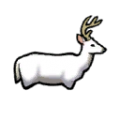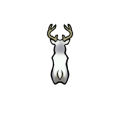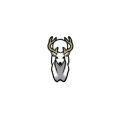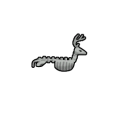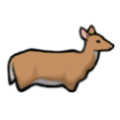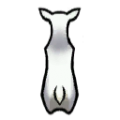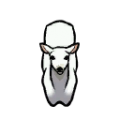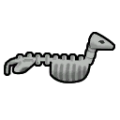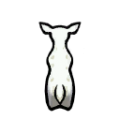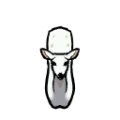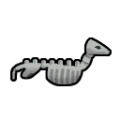Difference between revisions of "Deer"
| (10 intermediate revisions by 3 users not shown) | |||
| Line 12: | Line 12: | ||
|filth rate = 16 | |filth rate = 16 | ||
|herdanimal = true | |herdanimal = true | ||
| + | |combatPower = 50 | ||
|bodysize = 1.2 | |bodysize = 1.2 | ||
|healthscale = 0.9 | |healthscale = 0.9 | ||
| Line 62: | Line 63: | ||
}} | }} | ||
{{Info|'''Deer''' are herding herbivorous [[animals]] that are found in {{Habitats}}. Males of the species are called '''Bucks''' and can be distinguished by the presense of antlers and larger visual size, while females are called '''Does''' and are visually smaller and lack antlers. Young deer of both genders are light colored and spotted. Despite the visual differences, adult deer of both genders have the same stats and attacks.}} | {{Info|'''Deer''' are herding herbivorous [[animals]] that are found in {{Habitats}}. Males of the species are called '''Bucks''' and can be distinguished by the presense of antlers and larger visual size, while females are called '''Does''' and are visually smaller and lack antlers. Young deer of both genders are light colored and spotted. Despite the visual differences, adult deer of both genders have the same stats and attacks.}} | ||
| + | |||
| + | == Summary == | ||
| + | {{Pen Animal Note|Deer}} | ||
| + | |||
| + | == Analysis == | ||
| + | Other than being an animal to be hunted, deer don't have much of a purpose. | ||
| + | |||
| + | [[Ibex]] are more efficient ranch animals, are easier to tame, and they can be found in all biomes that deer populate. Deer ''are'' better to hunt than ibex, as deer are larger targets (which won't revenge when hunted). | ||
| + | |||
| + | ===Nutrition=== | ||
| + | When slaughtered, a deer yields {{#vardefineecho:baby_meat|{{Meat Leather Curve|{{#expr:{{P|Body Size}}*0.2*140}}}}}} meat and {{Meat Leather Curve|{{#expr:{{P|Body Size}}*0.2*40}}}} leather as a baby; {{Meat Leather Curve|{{#expr:{{P|Body Size}}*0.5*140}}}} meat and {{Meat Leather Curve|{{#expr:{{P|Body Size}}*0.5*40}}}} as a juvenile; or {{Meat Leather Curve|{{#expr:{{P|Body Size}}*140}}}} meat and {{Meat Leather Curve|{{#expr:{{P|Body Size}}*40}}}} leather as an adult. 1 meat is equal to 0.05 nutrition. | ||
| + | |||
| + | An adult deer consumes {{P|Real Hunger Rate}} nutrition per day, and a doe creates up to {{#expr: 1/{{P|Gestation Period Days}} round 2}} offspring per day. | ||
| + | * When offspring are slaughtered as babies, a doe will produce {{#expr:{{Meat Production|{{PAGENAME}}|baby}} round 2}} nutrition of meat per day, giving an optimal nutrition efficiency of {{%|{{Meat Production|{{PAGENAME}}|baby}}/{{P|Real Hunger Rate}} round 3}}. | ||
| + | * If the offspring are allowed to grow to adulthood, they will consume an additional {{#expr:{{Nutrition Consumption|{{PAGENAME}}|adult}} - {{P|Real Hunger Rate}} round 2}} nutrition per day, but will instead yield {{#expr:{{Meat Production|{{PAGENAME}}|adult}} round 2}} nutrition per day as they are slaughtered, resulting in an optimal nutrition efficiency of {{%|{{Meat Production|{{PAGENAME}}|adult}}/{{Nutrition Consumption|{{PAGENAME}}|adult}} round 3}}. | ||
| + | When considering a population of equal numbers of males and females, these nutrition efficiencies fall to {{%|{{Meat Production|{{PAGENAME}}|baby|1|1}}/{{Nutrition Consumption|{{PAGENAME}}|baby|1|1}} round 3}} for baby slaughter and {{%|{{Meat Production|{{PAGENAME}}|adult|1|1}}/{{Nutrition Consumption|{{PAGENAME}}|adult|1|1}} round 3}} for adult slaughter. | ||
| + | |||
| + | As mentioned above, [[ibex]], as well as [[horse]]s, are superior for nutrition. Horses are also [[pack animal]]s. | ||
==Training== | ==Training== | ||
| Line 67: | Line 86: | ||
== Health == | == Health == | ||
| − | {{Animal Health Table}} | + | {{Animal Health Table|QuadrupedAnimalWithHooves}} |
== Gallery == | == Gallery == | ||
| Line 73: | Line 92: | ||
DeerMale.png|Buck in color | DeerMale.png|Buck in color | ||
Deermale east.png|Buck facing east | Deermale east.png|Buck facing east | ||
| + | Deermale north.png|Buck facing north | ||
Deermale south.png|Buck facing south | Deermale south.png|Buck facing south | ||
| − | |||
Dessicated deermale east.png|Decaying buck | Dessicated deermale east.png|Decaying buck | ||
</gallery> | </gallery> | ||
| Line 80: | Line 99: | ||
Deer.png|Doe in color | Deer.png|Doe in color | ||
Deerfemale east.png|Doe facing east | Deerfemale east.png|Doe facing east | ||
| + | Deerfemale north.png|Doe facing north | ||
Deerfemale south.png|Doe facing south | Deerfemale south.png|Doe facing south | ||
| − | |||
Dessicated deerfemale east.png|Decaying doe | Dessicated deerfemale east.png|Decaying doe | ||
</gallery> | </gallery> | ||
Latest revision as of 00:42, 16 July 2024
Deer
A medium-sized herding herbivore which prefers to live in mixed forests and plains. Deer are very quick.
Base Stats
- Type
- Animal
- Flammability
- 70%
Pawn Stats
- Combat Power
- 50
- Move Speed
- 5.5 c/s
- Health Scale
- 90% HP
- Body Size
- 1.2
- Mass - Baby
- 14.4 kg
- Mass - Juvenile
- 36 kg
- Mass - Adult
- 72 kg
- Carrying Capacity
- 90 kg
- Filth Rate
- 16
- Hunger Rate
- 0.32 Nutrition/Day
- Diet
- herbivorous
- Life Expectancy
- 15 years
- Manhunter Chance
- 0%
- Manhunter Chance (Taming)
- 0%
- Trainable Intelligence
- None
- Wildness
- 75%
- Minimum Handling Skill
- 7
- Roam Interval
- 2 days
- Mate Interval
- 12 hours
- Maturity Age
- 0.333 years (20 days)
- Juvenile Age
- 0.1 years (6 days)
- Comfortable Temp Range
- -30 °C – 40 °C (-22 °F – 104 °F)
Production
- Meat Yield
- 168
 venison
venison - Leather Yield
- 48
 plainleather
plainleather - Gestation Period
- 5.661 days
- Offspring Per Birth
- 1
Melee Combat
- Attack 1
- Front left leg
7 dmg (Blunt)
10 % AP
2 second cooldown - Attack 2
- Front left leg
7 dmg (Poke)
10 % AP
2 second cooldown - Attack 3
- Front right leg
7 dmg (Blunt)
10 % AP
2 second cooldown - Attack 4
- Front right leg
7 dmg (Poke)
10 % AP
2 second cooldown - Attack 5
- Teeth
8 dmg (Bite)
12 % AP
2 second cooldown
0.5 chance factor - Attack 6
- Head
5 dmg (Blunt)
7 % AP
2 second cooldown
0.2 chance factor - Average DPS
- 2.12
- tradeTags
- AnimalCommon
Deer are herding herbivorous animals that are found in temperate forests, temperate swamps, boreal forests, and cold bogs. Males of the species are called Bucks and can be distinguished by the presense of antlers and larger visual size, while females are called Does and are visually smaller and lack antlers. Young deer of both genders are light colored and spotted. Despite the visual differences, adult deer of both genders have the same stats and attacks.
Summary[edit]
Deer are pen animals. Once tamed, pen animals cannot and do not need to be trained any further. But if left outside of a pen or caravan hitching spot, pen animals will eventually roam outside your colony. Making a caravan is not required to tie animals to a caravan hitching spot.
Analysis[edit]
Other than being an animal to be hunted, deer don't have much of a purpose.
Ibex are more efficient ranch animals, are easier to tame, and they can be found in all biomes that deer populate. Deer are better to hunt than ibex, as deer are larger targets (which won't revenge when hunted).
Nutrition[edit]
When slaughtered, a deer yields 35 meat and 17 leather as a baby; 84 meat and 28 as a juvenile; or 168 meat and 48 leather as an adult. 1 meat is equal to 0.05 nutrition.
An adult deer consumes 0.32 nutrition per day, and a doe creates up to 0.18 offspring per day.
- When offspring are slaughtered as babies, a doe will produce 0.31 nutrition of meat per day, giving an optimal nutrition efficiency of 96.6%.
- If the offspring are allowed to grow to adulthood, they will consume an additional 0.73 nutrition per day, but will instead yield 1.48 nutrition per day as they are slaughtered, resulting in an optimal nutrition efficiency of 141.4%.
When considering a population of equal numbers of males and females, these nutrition efficiencies fall to 48.3% for baby slaughter and 108.4% for adult slaughter.
As mentioned above, ibex, as well as horses, are superior for nutrition. Horses are also pack animals.
Training[edit]
This animal can be trained as follows:
| Guard: | |
|---|---|
| Attack: | |
| Rescue: | |
| Haul: | |
*As of version 1.1.2610, all animals can be tamed. The percentage of likelihood of success depends on factors such as the Animals Wildness Percentage, Pawn Handling Skill, and others. More information can be found on the animals page.
Health[edit]
| Part Name | Health | Quantity | Coverage[1] | Target Chance[2] | Subpart of | Internal | Capacity[3] | Effect if Destroyed/Removed |
|---|---|---|---|---|---|---|---|---|
| Body | 36 | 1 | 100% | 26% | N/A[4] | - | Death | |
| Spine | 22.5 | 1 | 3% | 3% | Body | Moving |
−100% Moving[5] | |
| Stomach | 18 | 1 | 3% | 3% | Body | Digestion |
−50% Digestion | |
| Heart | 13.5 | 1 | 3% | 3% | Body | Blood Pumping |
Death | |
| Lung | 13.5 | 2 | 3% | 3% | Body | Breathing |
−50% Breathing. Death if both lost. | |
| Kidney | 13.5 | 2 | 3% | 3% | Body | Blood Filtration | −50% Blood Filtration. Death if both lost. | |
| Liver | 18 | 1 | 3% | 3% | Body | Digestion |
Death | |
| Neck | 22.5 | 1 | 22% | 5.5% | Body | Eating Talking Breathing |
Death | |
| Head | 22.5 | 1 | 75% | 2.475% | Neck | - | Death | |
| Skull | 22.5 | 1 | 25% | 1.2375% | Head | - | Cannot be destroyed Increasing Pain based on damage. | |
| Brain | 9 | 1 | 70% | 2.8875% | Skull | Consciousness |
Death Damage always results in scarring. | |
| Eye | 9 | 2 | 12% | 1.98% | Head | Sight |
−25% Sight. −100% if both lost. Damage always results in scarring. 0% Hit Chance against Blunt damage. | |
| Ear | 10.8 | 2 | 8% | 1.32% | Head | Hearing |
−25% Hearing. −100% if both lost. | |
| Nose | 9 | 1 | 10% | 1.65% | Head | - | - | |
| AnimalJaw | 9 | 1 | 10% | 1.65% | Head | Manipulation |
−100% Manipulation. Can no longer use Bite attack. | |
| Front Leg | 27 | 2 | 7% | 5.95% | Body | Moving |
−25% Moving. −50% if both lost. Can no longer use Hoof attack.[6] | |
| Front Hoof | 9 | 2 | 15% | 1.05% | Front Leg | Moving |
−25% Moving. −50% if both lost. | |
| Rear Leg | 27 | 2 | 7% | 5.95% | Body | Moving |
−25% Moving. −50% if both lost. | |
| Rear Hoof | 9 | 2 | 15% | 1.05% | Rear Leg | Moving |
−25% Moving. −50% if both lost. |
- ↑ Coverage determines the chance to hit this body part. It refers to the percentage of the super-part that this part covers, before its own sub-parts claim their own percentage. For example, if the base coverage of the super-part is 100%, and the coverage of the part is 20%, 20% of hits would hit the part, and 80% the super-part. If the part had its own sub-part with 50% coverage, the chances would be 10% sub-part, 10% part, 80% super part.
- ↑ Target Chance is the actual chance for each part to be be selected as the target when each part's coverage has been taken into account(I.E. Neck covers 7.5% of Torso but Head covers 80% of Neck so it actually has only a 1.5% chance to be selected). This is not pure hit chance, as different damage types propagate damage in different ways. See that page for details.
- ↑ Note that capacities can affect other capacities in turn. Only the primary effect is listed. See specific pages for details.
- ↑ This is the part that everything else connects to to be considered 'connected'.
- ↑ If Moving drops below 16% a pawn cannot move.
- ↑ A Blunt/Poke attack with cooldown of 2s. The actual Hoof is unrelated
